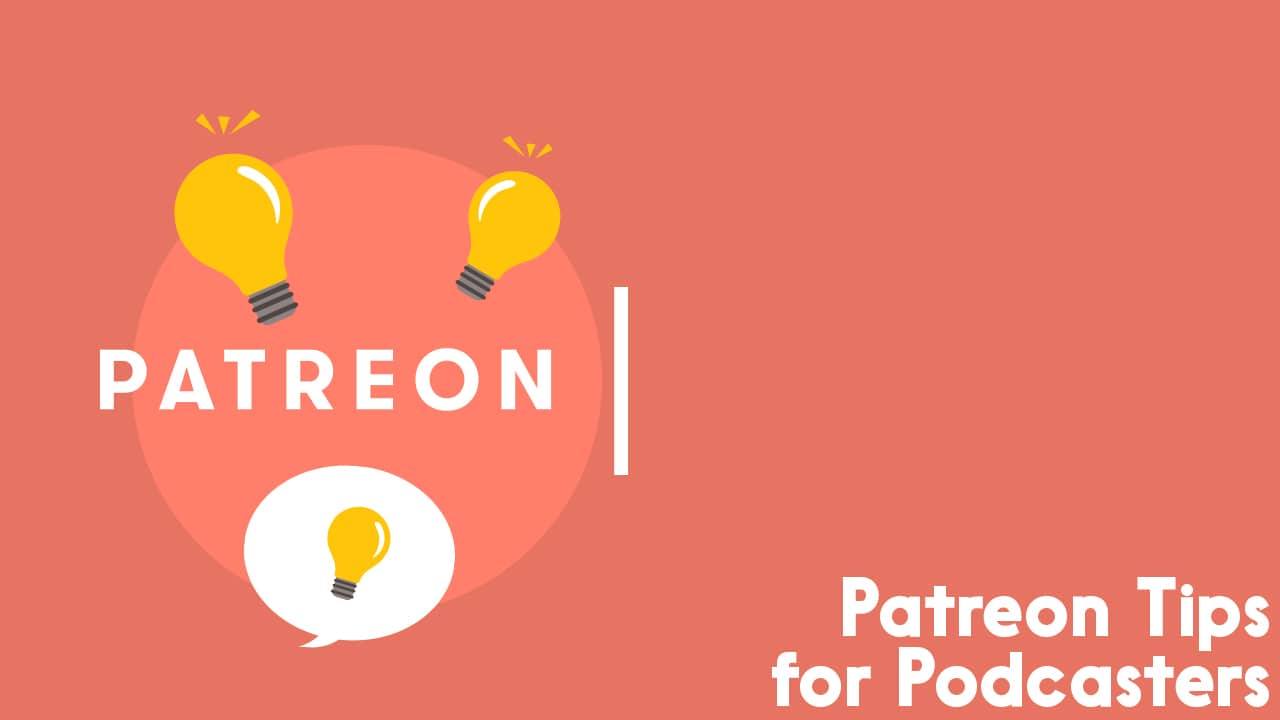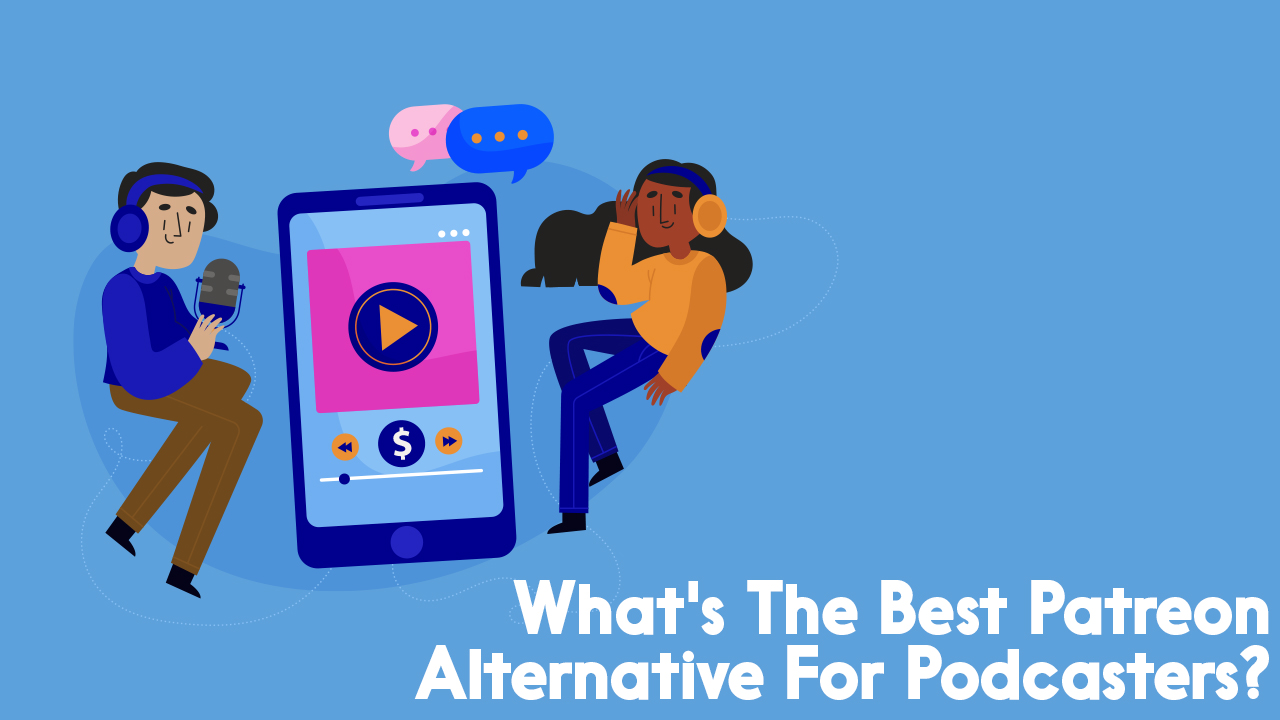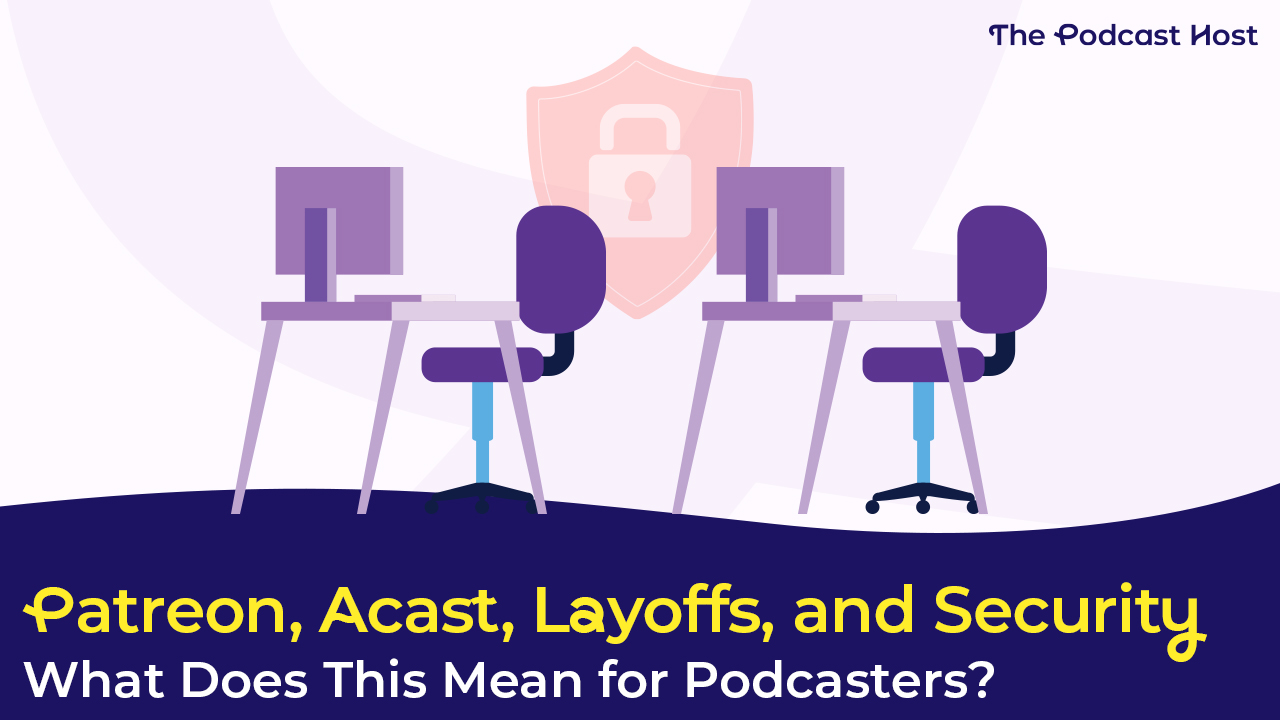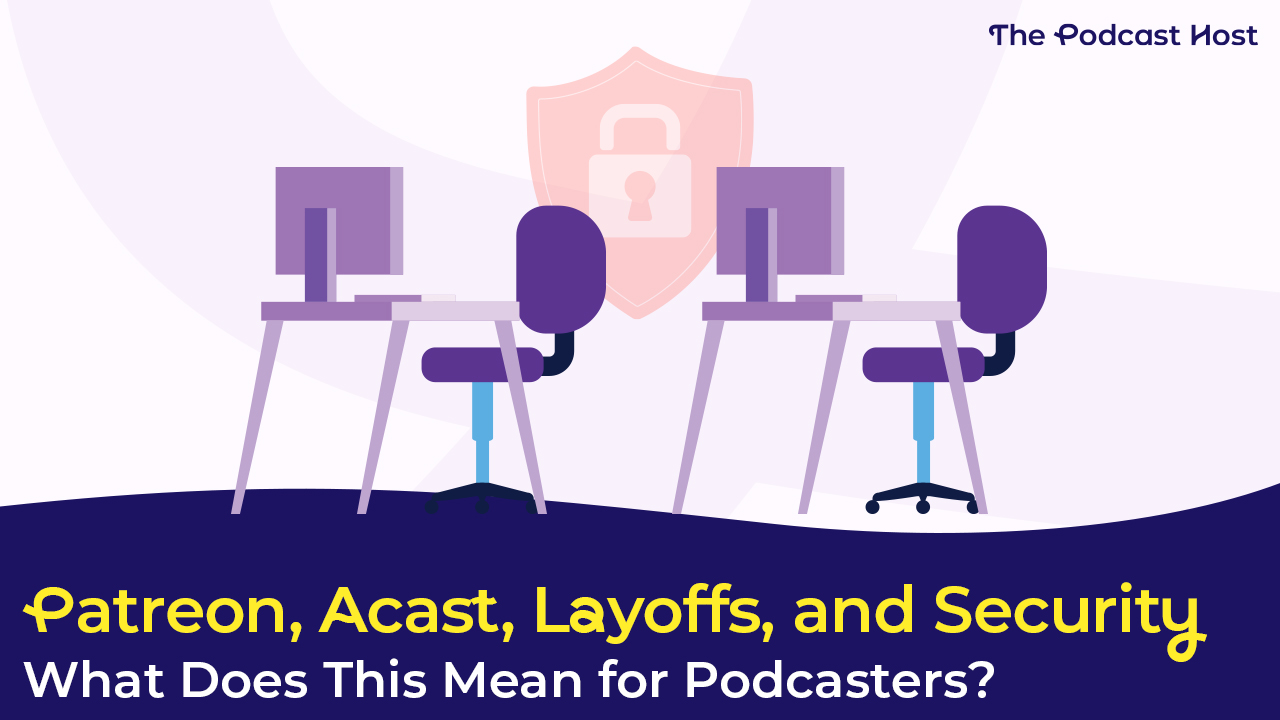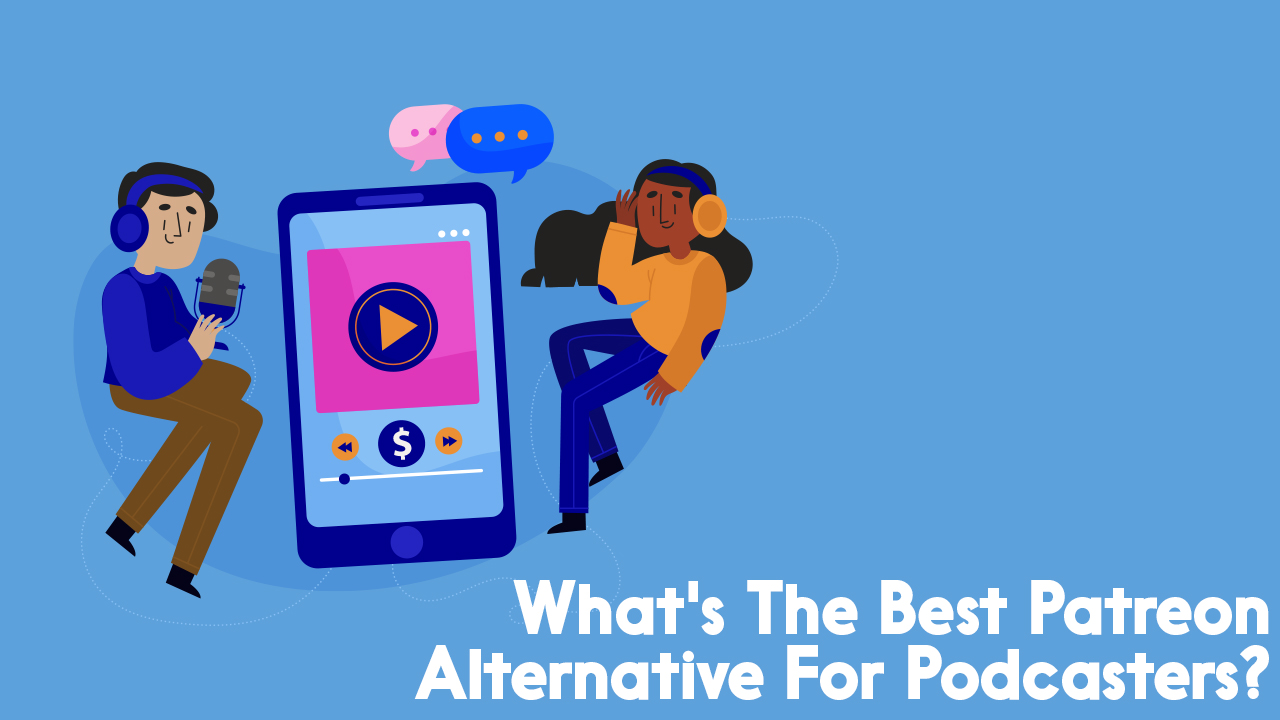Want to make money with your podcast? Patreon helps you do this, and more.
Patreon builds community around your content. Like other crowdfunding platforms, it helps your audience “pre-order” merchandise. Patreon helps you create an RSS feed, exclusively for your supporters. This is the strongest reason for podcasters to use Patreon. While it’s not difficult to set up a private podcast through your media host, Patreon offers this and other ways to connect with your audience.
Patreon’s creative community is varied and dense enough that its app could be a competitor to most entertainment streaming services.
Most importantly, Patreon is self-aware. The company knows that it’s growing, learns from its mistakes, and provides good creator resources. Patreon has membership tiers tailored to the needs of different kinds of creators.
Let’s look at some helpful tips to make the most of Patreon, and some examples of interesting uses of this persuasive crowdfunding platform.
Best Practices
As we said, Patreon provides a lot of resources for creators. Patreon updates its blog and learning modules to reflect changing trends in crowdfunding.
Some crowdfunding campaigns, like Kickstarter, or Indiegogo, are finite. Patreon is for the long haul. The smaller price tag for pledges makes it easier for people to commit to supporting your podcast.
Bearing this in mind, you should think about how sustainable Patreon is for you.
What’s In It For Me? Supporter Benefits
An honest thanks is a big motivator in this day and age. Patreon lets you set up an automatic reply to all new backers. This can include video, which they recommend. Send a personal thank you message as well.
Delivering podcast content to backers is simple, with Patreon’s built-in RSS feed. This makes your podcast episodes available exclusively to supporters. It’s a good way to publish audio extras. Producers could (and some do) publish their work solely on Patreon.
In terms of the competition for audience attention, Patreon is a small slice of the pie though. Spread the news about your work far and wide, not just on one platform.
Tiers
The benefits offered in the support tiers are the hook that catches supporters. Think about how much supplies, time and effort it takes to deliver benefits to your patrons. Consider what people will appreciate, as well.
A hand-written postcard is a popular reward. Podcasting is about connecting with other people. Why not take the time to write and send cards appreciating your listeners?
In contrast, let’s say your backer pledges $2 a month. If you send them a t-shirt costing $14, then it will take months for that gift to balance out your accounting. Some creators indicate that for higher tiers, the backer gift ships after a certain number of months of support. Don’t promise more than you can deliver.
At the Premium tier, though, Patreon offers Merch for Membership. This lets creators design a logo or art, and use Patreon’s print on demand service.
Plan tie-ins in the early stages, when you create scripts. What is it about your podcast that you really want to highlight? How can you make those elements tangible? Let’s say that your podcast is about cooking. You can send handwritten recipe cards. If your podcast is about business or life coaching, and you’ve read our article about Canva, consider making inspirational wallpapers for your backers to download. You’re recording already. Why not make ringtones or audio extras to share?
Take some time to browse through Patreon. Look at benefits for different levels of support. The most successful creators on Patreon support other creators. Think about what kind of gifts you would like to receive in exchange for support. Think about what kind of time and effort those gifts take.
Transparency
How do you want to display your support on your overview page? You can choose to display, or keep private, how many supporters you have, and how much you earn per creation, or per month. Displaying earnings is a controversial topic.
Some feel that it’s wise to hide how much money you make. It the amount is too high, potential backers may think, “this creator doesn’t really need my help.” If it’s too low, they may think, “this creator must not be very good.”
Some feel that earning amounts should be visible. This can make potential backers feel like they’re joining “the next big thing.” Film studios brag about the cost of feature films. Auction houses publicize the cost of rare paintings. Other professions compete for salaries. Why not artists?
Whichever you choose, show and explain how you use the money earned. Let’s say you need a new mic. Use Patreon funding to buy it. Post a thank you message to your supporters. Post sound samples displaying the difference in sound. Show your supporters that the money goes to something specific.
Clear Visual Bridges
You want to keep your brand imaging consistent. Patreon does, too. They have brand assets and guidelines to keep visuals consistent. This gives you credibility. There’s plenty of room in your Patreon page to link to your other social media platforms.


Shared Goals
The Goals feature incentivizes supporters to increase their support or get other people to join them. This is the clearest way to show the specificity of your funding, and celebrate reaching goals with your backers. Not everyone uses it, but it’s always a good idea.


Categories
Just like any other website, creators can categorize their posts. If you’re a podcaster who uses different kinds of media, this lets your backers filer your feed by what’s most relevant to them. Fool & Scholar, for example, has multiple podcasts, and different ways of engaging with their supporters. Categories make it easier for their backers to find the content they want.


Pricing
Patreon offers three levels of support for creators, each with a different price tag. Just like podcasters should be paid for their time, effort and skill, Patreon has to get paid, too. Patreon doesn’t charge creators until they start receiving pledges but the benefits kick in as soon as you set up your account and choose a tier.
- Lite: For 5% of the monthly income earned, Patreon provides all the basic tools you need. You have a hosted creator page, the communication tools mentioned, such as the RSS feed, and the resources to understand how to get the most out of Patreon.
- Pro: In exchange for 8% of the monthly income earned, Patreon offers everything from the Lite level, and membership tiers, analytics and insights, a promo tool for special offers, workshops led by other creators, unlimited app integrations (such as Discord), and priority customer support.
- Premium: In exchange for 12% of the monthly income earned, Patreon provides all of the above and, a dedicated partner manager, print-on-demand merchandise design and fulfillment, and multiple logins for team members. This tier is probably best suited for podcasters who already have a following too big for one or two people to manage.
The thorniest issue for podcasters, which Patreon kindly takes off your hands, is payment processing. There’s an additional fee per pledge at all levels. Personally, I don’t mind paying this extra fee. I’d rather spend more time podcasting, and less time billing, investigating failed payments, and protecting myself against fraud.
Case Studies of Patreon Creators
Patreon has a great list of their top-performing podcasters. But, there isn’t just one recipe for success with Patreon for podcasters. Here are three creators with very different approaches to Patreon’s features.
Chapo Trap House
This is a statistical outlier of success with Patreon for podcasters, which is why it’s worth mentioning. Let’s get it out of the way. Chapo Trap House’s Patreon is as no-frills and direct as their approach to politics and current events. Their overview page shows how many patrons support them, and how much they make per month. This transparency is pretty good. It’s hard to notice to their honesty, however, when you notice how much money they’re making.
They have two support tiers, no higher than $5. The community here is like Fight Club. You don’t talk about it, you just commit.
The Amelia Project
The Amelia Project’s Patreon experience is as much fun as this audio drama podcast itself. They put as much detail into the Patreon benefits as into each podcast episode. The Patreon page itself is a visual storytelling experience.
Patrons can view case files for each of the Amelia Project’s clients, in visual adventures that complement each episode. The PDFs make use of handwriting and typefaces that require a tiny bit of extra focus on the part of the beholder. At higher levels, there are opportunities to meet the creators in web chats.
They sum up the experience with, “Amelia is all about secrets.” Creators Philip Thorne and Oystein Brager don’t give everything away, making the reader feel smart for understanding their visual and legible gameplay. In each episode, the announcer reminds you that you can find more details about that episode’s story at Patreon. The two media have a symbiotic relationship.
The Amelia Project’s Patreon feels like an invitation to a secret club, one that rewards you for paying attention and cleverness.
Sitcom Geeks
Creators James Cary and Dave Cohen learned their trade writing for shows such as Miranda, Spitting Image, Bluestone 42 and Horrible Histories. They created Sitcom Geeks because writing situation comedy used to be something one could learn on the job. As Cary says, “The reality is that there are now almost no comedy writers in that position.” Cohen adds, “One of the reasons I started to teach comedy writing was because I wanted to learn it.” You can learn a lot about writing through their podcast alone. But, their Patreon supporters become active students with growth potential. Their support tiers start with a private RSS feed, a private Facebook group, and e-books about sitcom writing. At higher levels, supporters get script analysis, discounts on intensive master classes, and a creative business seminar.
The difference here is that the more a supporter wants from them, the podcasters can deliver. It encourages an active relationship with the podcaster, with clearly defined give and take. As shown previously, they’ve been using shared goals to encourage and celebrate their supporters.
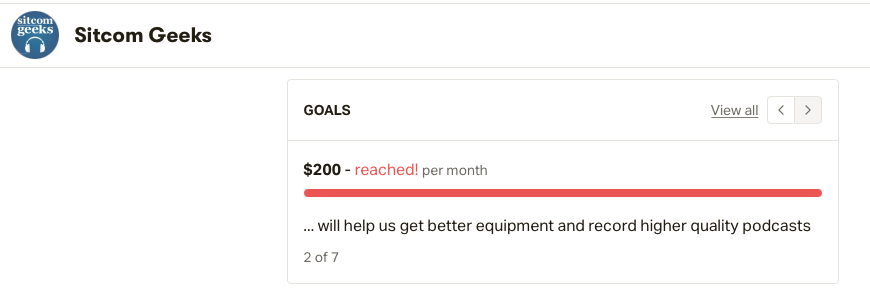

On top of these case studies, here are some interesting Patreon stats that can tell us a lot about the platform, too.
What’s the recipe for the perfect Patreon?
It’s the same as the recipe for the perfect podcast: plan ahead, know what you’re passionate about, know who you want to reach.
If there could be a community clubhouse for your podcast, what would it be like? What means would it use for the club members to communicate? What would be the club’s benefits? Think about what super-fans of your show would want to see, know, and do. Give it to your fans in manageable doses. Make it easy for them to support you.
Need More Help?
Want to find out more about how to make your podcast sustainable? Join us at the Podcast Host Academy. With our courses, downloadable resources, community forums and live Q&A web chats, we can help you avoid un-productive revenue models. Not only that, we can help you take what you love most, and share it with others, in a rewarding, focused way.
